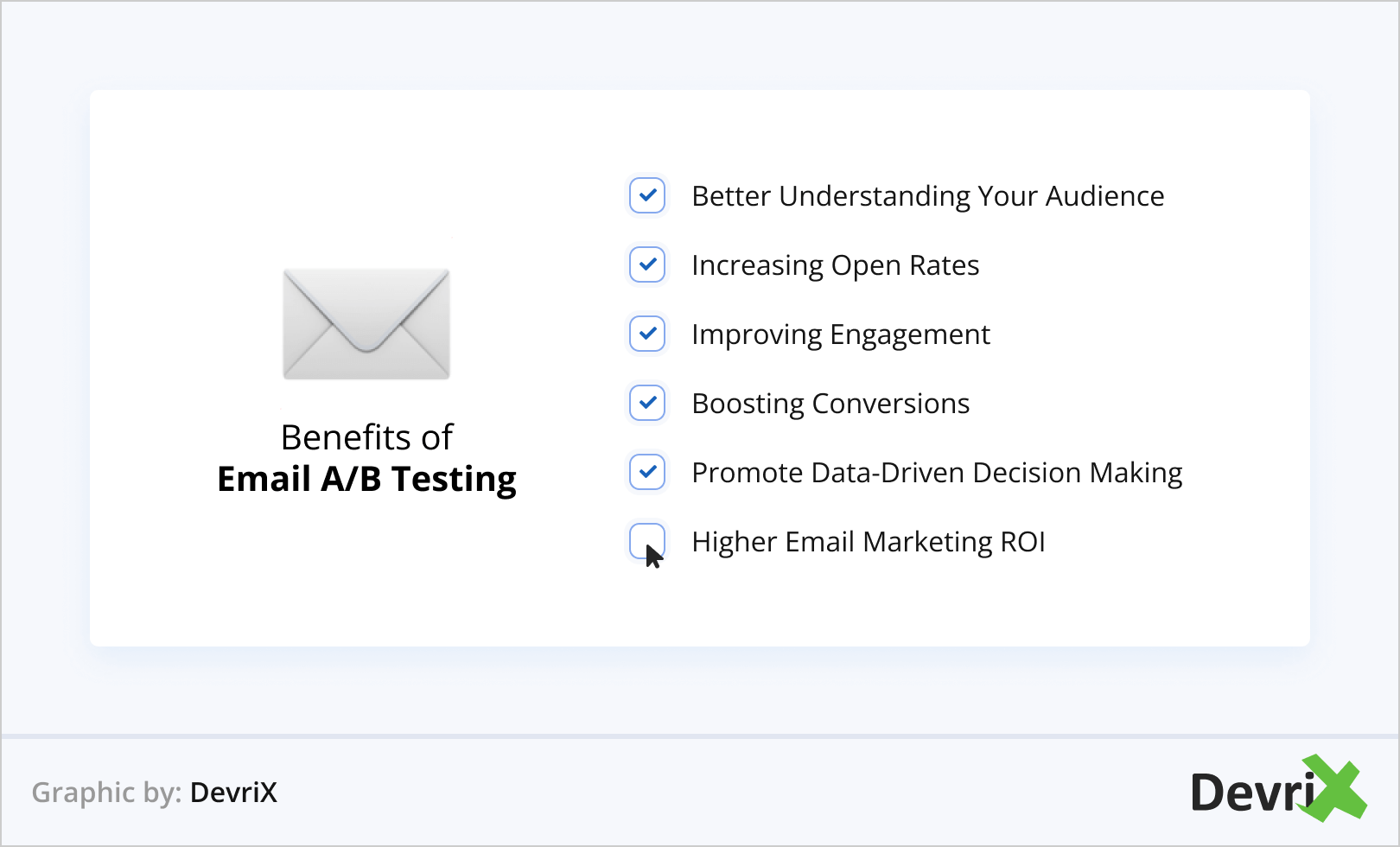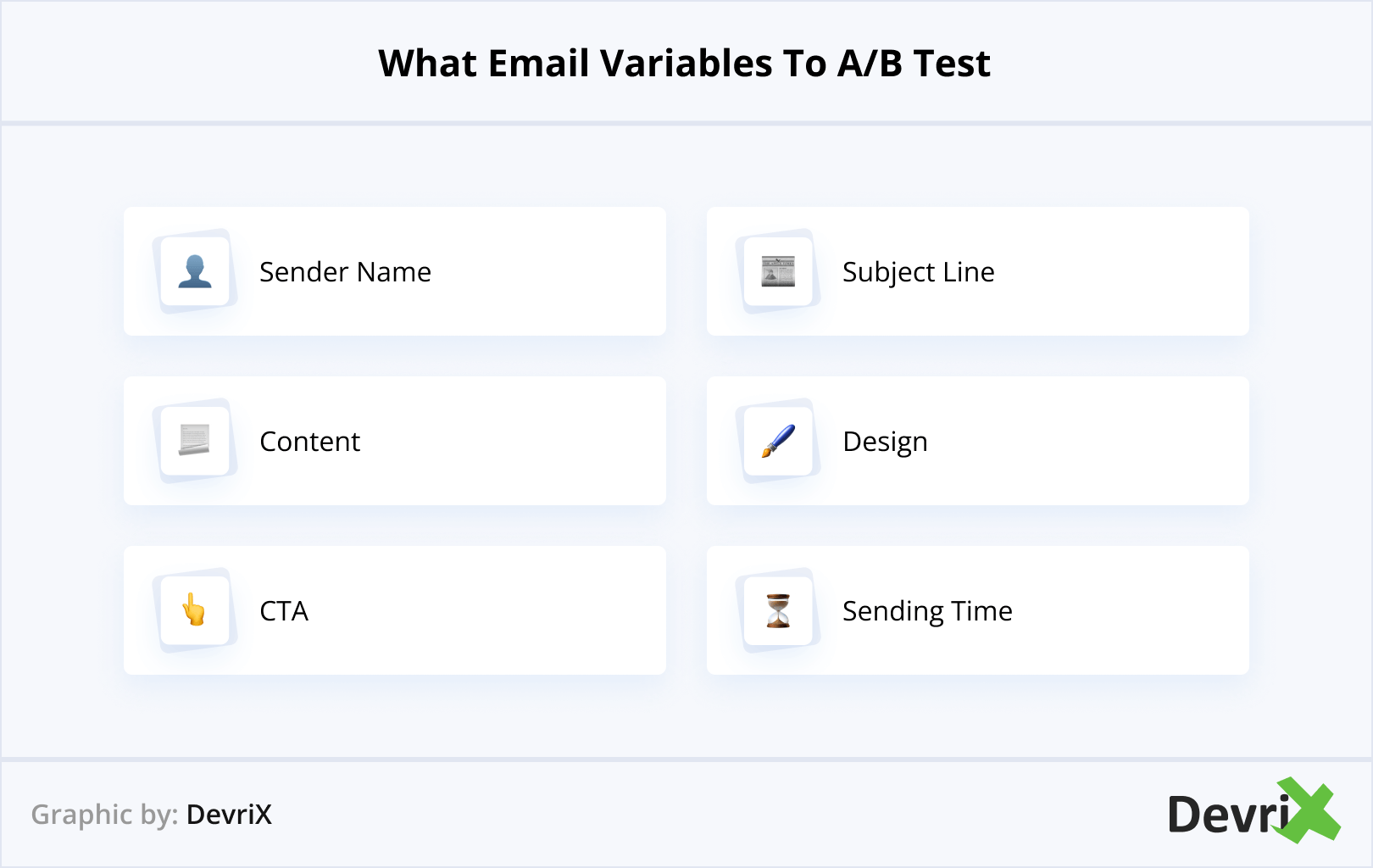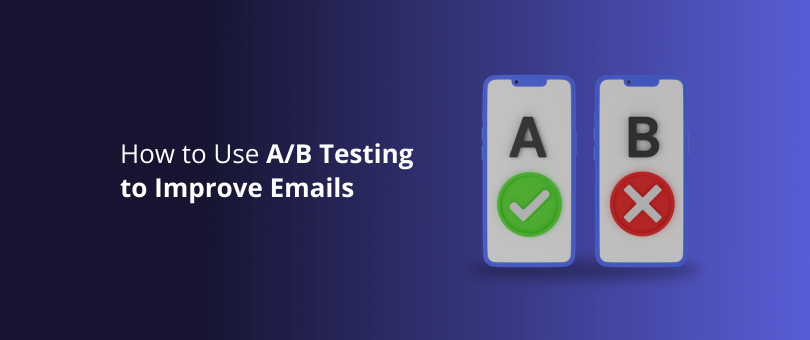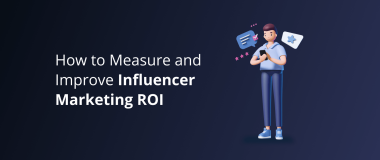When businesses create email campaigns, they do their best to attract the customer’s attention and encourage engagement and conversions.
However, while the big picture and overall marketing message is what matters to us as marketers, more often than not, it’s the details that affect whether or not users open emails, click on CTAs, and convert.
In fact, sometimes, even the tiniest of changes in one of your email elements can make or break your campaign.
Luckily, modern email marketing tools offer a plethora of email A/B testing functions that allow you to compare approaches, and find the winning combination of subject lines, designs, and content.
In this article, we’ll talk about the what, why, and how of testing your emails, and highlight which practices can boost the effectiveness of your campaigns.
Read on!
What Is A/B Testing in Email Marketing?

Email A/B testing is a technique that allows you to simultaneously run different versions of your email marketing campaigns to check which ones perform best.
The goal is to test out the main elements of your emails, and analyze the results to see what changes drive up engagement and affect your customer’s behavior and purchasing decisions.
By combining this approach with segmentation, you can identify the factors that influence each of your customer groups, and create personalized campaigns that resonate with them.
The ultimate purpose of email A/B testing is to maximize the performance of marketing and transactional messages, and boost the ROI of your efforts.
How Does Email A/B Testing Work?
As A/B testing is a function of email marketing tools, how you implement it depends on what the provider offers.
Generally, you create two (or more) versions of an email message with small changes in the sender’s name, subject line, content, CTA, and/or send time.
Some solutions have a multivariate function that allows you to not only test versions of the same email element against each other, but see how combinations of these changes in different elements compare.
More often than not, the process is almost completely automated:
- You create the A and B messages.
- You set the KPI/s (i.e. open rates, conversions, link clicks, etc.)
- The program chooses two suitable samples of your audience and sends the messages.
- The algorithm analyzes the performance of each email.
- The program sends the best one to the rest of your designated email list.
Depending on the tool, there can be manual options that allow you to analyze the results and choose how to proceed once the test is completed.
Why to A/B Test Your Emails?
If you are wondering why you should invest the time and effort into A/B testing of your emails, the simple answer is – to improve them and maximize results.
However, there is more than one benefit to A/B testing, including, but not limited to:
- Better Understanding Your Audience
- Increasing Open Rates
- Improving Engagement
- Boosting Conversions
- Promote Data-Driven Decision-Making
- Higher Email Marketing ROI

Better Understanding Your Audience
In our marketing strategies, as much as we want to think like the customer, we are marketers and therefore we are most likely somewhat biased.
When setting up our email marketing campaigns we project and target our perceptions of the client, rather who than the real customer is.
That’s because we base our marketing messages on personas and personas are not real people – they are just fictional characters. Real people react to marketing content differently, and what resonates with your audience is unique to them.
Furthermore, what delivers results in one campaign, may not work in another.
By regularly testing your emails, you will ensure that each message is properly optimized and targeted.
Increasing Open Rates

When it comes to emails, the most challenging issue to overcome is getting customers to notice your messages in the avalanche of personal correspondence and promotional materials flooding their inboxes.
By testing different variables, you increase the chances of capturing their attention, and make it more likely that they will open your emails.
And the more people that open your emails, the more chances you have to win them over, and accomplish your goals.
Improving Engagement
A/B testing allows you to find the combination of email variables that best engage the user, and provide the most satisfying results.
You can play around with different settings and change each element to see what influences the customer’s behavior and how.
This way, you can craft emails that really make an impact.
Boosting Conversions
Your A/B test reports also show you how the changes affect the actions that you’ve set up as conversions. This allows you to improve the overall results of your campaigns, and improve leads, link clicks, sales, or whatever you are after.
Data-Driven Decision-Making
It’s a safe bet that while designing emails, your team comes up with different working versions of each element, and debates which ones should make it to the final draft.
By comparing different content, CTAs, links, buttons, designs, and approaches against each other, you leave out the guesswork and make better data-based decisions.
Higher Email Marketing ROI
The most prominent of all the A/B testing benefits is that you can improve your email marketing ROI and not only justify your budget, but obtain better results.
In fact, research shows that brands that conduct A/B testing on each email campaign have a 37% higher email marketing ROI.
After all, even if your emails deliver top results, there is always room for improvement – so why miss out on the opportunity, when it’s only a few clicks away?
Email A/B Testing Best Practices: What to Test?
If you are new to the concept of email A/B testing, you may find it difficult to decide what to tweak in order to boost performance.
Here are the most important email elements to consider experimenting with:
- Sender Name
- Subject Line
- Content
- Design
- CTA
- Sending Time

Sender Name
More often than not, businesses set up their company or brand name as the sender of their emails.
However, there’s a growing trend to shake things up in this part of your messages by adding the name of the person who’s behind the campaign.
For example, instead of receiving a message from “DevriX”, you may get one from “Amy from DevriX”.
This may make your emails feel more personal, and affect your open rates.
Subject Line
Another email element that strongly impacts your email open rates is the subject line.
More often than not, this is the first thing a user will notice about the messages in their inbox.
However, based on the email service provider, emails may render differently according to each client’s inbox. This may affect what parts of the subject line users see on their devices, and how they interact with it.
Consider testing different phrasing, TOVs, punctuation, formatting, and length of the subject line to see how they affect rates and engagement.
Content
To ensure the desired engagement and results, you need to make sure that once the user opens your emails, the content doesn’t disappoint.
To that end, you can A/B test different versions of the following variables:
- Images. Some emails work better without images, while, in others, choosing the right visuals can make all the difference.
- Links. How your format links and where you place them can define whether or not users click on them.
- Videos. While video is considered to be one of the formats that drives the most engagement, it’s not a one-fits-all solution.
When deciding whether or not to add videos to your emails, you should test whether they deliver the type of conversion you desire.
- Message. What information you include in your message and how you present it affects whether or not the user engages.
Try out different versions of the copy to see what resonates with your audience.
- Structure. Where you position the elements of your message may affect how well users interact with them.
- TOV. Generally, your TOV should correspond to your brand personality and identity. However, different campaigns may call for adjustments in the wording and style of your messages.
Design
The design of your emails has a great impact on how people engage with them.
How you present and format your message, what parts of it you highlight, and how you group the information is vital to the readability of your content.
Sometimes even the smallest of changes can make your content more engaging, and boost its performance.
For example, Campaign Monitor achieved a whooping 127% increase in their email CTR by redesigning their blog email.
Not bad, right?

To find out whether your emails can benefit from a redesign, consider testing different color variations, button designs, and overall layouts.
CTA
CTAs are one of the most important parts of emails because they are directly associated with the conversion.
Furthermore, even if everything else in your message is crafted to perfection, a confusing CTA can drive the customer away and prevent them from continuing to the next step in their journey.
Of course, how you compose and where you position the CTA depends on your message and campaign goals.
However, when conducting A/B testing, you can consider placing a different number of CTA’s across the content and playing around with the wording.
Sending Time
While you may come across different recommendations of when to send your emails, the best way to choose your timing is to test it out.
The behavior of your audience depends on their daily routine, browsing habits, device preferences, and so on, and so forth – in other words, each audience is unique.
By testing out various combinations of week days and hours, you can find the moments when your customers are most likely to open your emails, engage, and convert.
For example, you may discover that morning messages on weekdays have high open rates, but drive few conversions, and the same emails achieve better results at noon or in the late afternoon.
Bottom Line
Email A/B testing is the best way to improve the performance of your campaigns and ensure that the time and effort you invest in email marketing are worth it.
By testing out different versions and combinations of variables, you make it more likely that your messages resonate with your target audience.
As a result, you can achieve an increased open rate, have better engagement, more conversions and sales, and, ultimately, a more satisfying email experience, and a higher ROI.

![[Infographic] 24 Fundamental Email Marketing Stats](https://devrix.com/wp-content/uploads/2018/01/Infographic-24-Fundamental-Email-Marketing-Stats-380x160.png)


